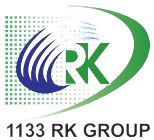How to Do Accounting for Your Construction Business 8 Steps
Additionally, they will ensure that the construction company complies with all regulations. The Davis-Bacon Act (DBA) is a United States law that requires employers to pay prevailing wages—the regional minimum pay requirement—on public works projects for laborers and mechanics. Now that you know how company accounting is different, let’s get into the nitty-gritty of accounting for contractors. Therefore, the allowable wages for workers on federal projects are dynamic and location-specific, based on the prevailing wage determinations published by the government.
A Guide to Understanding Double-Entry Accounting for Business Owners
Whether she’s balancing books or exploring new trails, MJ’s dedication and skill set the standard for excellence in our team. Bridgit Bench is a workforce planning platform built to help construction professionals, including accountants. Construction companies often face complex tax regulations, especially when operating across multiple jurisdictions. Management should provide oversight to ensure that internal controls are being followed and that any weaknesses are addressed in a timely manner. We looked at third-party ratings and reviews to see how actual users felt about the software.
Construction accounting: Step-by-step & best practices
Overall, compliance and best practices are essential for construction companies to ensure the accuracy and integrity of their financial records. By implementing internal controls, using software and tools, and hiring tax professionals, construction companies can improve efficiency and reduce the risk of errors and fraud. Finally, you want to find a solution that you can customize if you have special reporting or processing needs. This may be relevant for larger companies that have multiple projects that they manage simultaneously and need to create comprehensive reports and cash flow data for stakeholders. Improper tracking of payments can lead to compliance issues and inaccurate job costing.
Essential Tips for Doing Bookkeeping for Construction Companies
As we mentioned earlier, contract retainage can account for 5 to 10 percent of your contract value. This helps you get a better idea of how much money is coming in and going out of your business every month. Apart from giving you insight into where your money is going, receipts also serve as proof of your business expenses in case you ever get audited. You also need to keep in mind that the construction industry is highly susceptible to political and economic fluctuations. In most industries, commissioned contractors get paid upon delivery of a product or service. You can go to a bank or credit union to set up a company checking account that suits the needs of your firm.
All costs must be tied together in bookkeeping, including expenses from labor, equipment, materials, transportation, and insurance. Budgeting and forecasting are essential for construction companies because they often have large, complex projects that require significant resources. To budget effectively, companies need to estimate their costs accurately and allocate resources accordingly. Cash flow management is critical for construction companies because they often have large expenses and long payment cycles. To manage cash flow effectively, companies need to track their cash inflows and outflows and forecast their future cash needs. Construction bookkeeping construction bookkeeping is a form of bookkeeping unique to the construction industry.
- Cash basis accounting is simpler and easier to manage, but accrual basis accounting provides a more accurate picture of your company’s financial health.
- A benefit of this approach is that you can track income, operating expenses, profit, and taxes on the micro-level so you gain a better understanding of where you stand on each construction project.
- Milestone payments are payments paid out after achieving a defined stage of progress on a project.
- Under regular business accounting circumstances, revenue recognition is simple because they sell a product or service and collect a fixed price right away.
Topic 606 is an accounting standard update (ASU) that requires public companies to disclose information related to their revenue recognition practices. Contractors and real estate developers use GAAP construction accounting to increase their financial accountability and provide valuable peace of mind to customers. Accrual basis accounting is a method contractors use to record financial transactions that involve revenue or expenses in the period they are incurred rather than when they are paid or received. This accounting method is great for small construction businesses that don’t have a high volume of sales or complex transactions. Due to the industry’s distinct nature, certain financial statements exist just for construction accounting. These statements try to address the complexities that are prevalant in construction operations and give stakeholders access to accurate, and actionable financial information.
- Each business needs to have a general ledger and records of accounts payable and receivable.
- Programs such as Sage 100 Contractor and ProContractor by Viewpoint can help with everything from job costing to managing purchase orders.
- Common scenarios for change orders include the owner requesting adjustments like moving a wall, adding a window, or changing the flooring material.
- Familiarize yourself with contractor tax forms that are relevant to your business, such as Form 1099-NEC for nonemployee compensation and Form W-2 for employee wages.
- We looked at a total of 22 different metrics across five separate categories to reach our conclusion.
WIP Reporting
In many cases, you need to have your financial records for at least three to seven years (varying by state and type of record) so losing them would cause a lot of problems. The construction sector is vulnerable to the effects of governmental and economic policies. Speak with a representative to obtain an estimate and schedule a meeting with a Certified QuickBooks Pro Advisor to review your financial records.


Leave a Reply